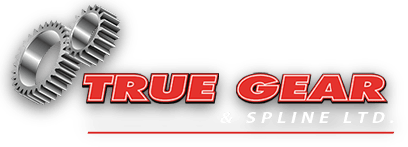Keep up to date with us on the latest industry news as well as what's going on at True Gear & Spline Ltd. We also post articles for insider tips and tricks, so make sure to check back frequently.
Choosing the Right Gear Coupling for Canadian Industrial Needs

Canada’s industrial and manufacturing sectors have been pushing the boundaries for many decades. Canadian industries, while embracing innovation, have been working non-stop to contribute to the nation’s development. Mining, automotive, aerospace, and energy are all major sectors driving the country’s economic progress. Even the smallest snag in their operations has a detrimental effect on the cumulative economy. Canadian industries rely on top-of-the-line components to avoid mishaps and downtimes. Gear coupling is a component that silently powers countless industrial operations. In this article, we list how to choose the right gear coupling for your specific needs. Read until the end to make an informed decision.
What Is a Gear Coupling and How Does It Work?
Basic Structure and Function
A gear coupling is a simple mechanical device connecting two shafts. It is placed at the end of the two shafts and usually comprises hubs and a sleeve. Two hubs are connected to the end of each shaft, and both of them are held together with the help of the sleeve. The hubs have external teeth while the sleeve has matching internal teeth, ensuring seamless meshing. The simple yet effective design of couplings facilitates angular, parallel, and axial misalignment.
Key Mechanical Advantages Over Other Couplings
The high torque capacity and exceptional flexibility set gear couplings apart from other types, such as rigid and elastomeric. The simple and compact design of gear couplings makes them perfect for applications in tight spaces. What’s more? Neither do they demand perfect alignment, nor do they compromise on torque capacity.
Where Gear Couplings Are Commonly Used in Canada
Canadian industries rely on gear couplings in applications where power, durability, and misalignment tolerance are critical. Common examples include:
Mining equipment – conveyors, crushers, and hoists
Steel mills and foundries – rolling mills, furnaces, and heavy drives
Pulp and paper mills – large rotating drums and presses
Energy sector – turbines, pumps, and compressors
Key Factors to Consider When Choosing a Gear Coupling
Torque Requirements and Load Conditions
One of the biggest mistakes you can make is to go for a coupling that has peak torque capacity higher than your torque requirement. Failing to do so causes premature wear and tear and damage to components due to overloading. Carefully assess the torque requirements of your application and make wise decisions. Collaborate with a gear manufacturing expert for professional advice.
Shaft Misalignment and Flexibility Needs
Gear couplings are designed to handle misalignment; However, it is essential to understand that there are different levels of axial, parallel, and angular misalignment. Carefully assess the misalignment levels to source gear couplings that offer flexibility, facilitating torque transmission even when pushed to their limits.
Environmental Conditions
Environmental conditions affect all industrial and mechanical operations. For example, components that work well on oil rigs would not necessarily perform well for the mining industry. Consider environmental factors, such as temperature, dust, and moisture, before choosing gear couplings. The choice of materials, protective coating, and lubrication impacts the durability and performance of couplings.
Industry Standards and Compliance in Canada
Ensure the couplings meet the local and federal compliance, set by the relevant authorities. Work with experienced gear manufacturers to ensure the couplings meet the highest performance and safety standards.
Checklist: Gear Coupling Selection Essentials
- Max torque rating required
- Angular and parallel misalignment tolerance
- Operating temperature and exposure conditions
- Application-specific loads and speeds
- Maintenance access and inspection ease
Comparing Gear Couplings with Other Coupling Types
Gear Coupling vs. Disc Coupling
Disc coupling is popular in Canada’s industrial scene. It is known for excellent accuracy and low maintenance requirements. It uses thin, deformed steel discs to accommodate misalignment. However, when compared with gear coupling, they lack torque capacity. Meaning, gear couplings are the perfect choice for high-torque, high-precision applications.
Gear Coupling vs. Grid Coupling
Grid coupling, as the name suggests, features a stainless steel, flexible grid that accommodates misalignment between rotating shafts. It also features a cover, hub, seal, and gasket, facilitating excellent vibration damping. However, when it comes to raw torque transmission capacity, nothing beats gear coupling.
Advantages of Gear Couplings For High-Torque Industrial Use
-Unmatched Torque Capacity
-Compact Design
-Misalignment Tolerance
-Durability In Harsh Environments
-Shock Load Resistance
-Versatility
-Cost-Effectiveness
Standard vs. Custom Gear Couplings
When Off-the-Shelf Works
While custom gear couplings are the better choice, off-the-shelf gears work perfectly for generic applications. The cost-effectiveness, easy availability, and lower cost make off-the-shelf couplings popular among Canadian industries.
Why Go Custom for Unique Load or Space Requirements?
Specialized operations demand access to custom gear couplings. They are specifically designed and manufactured to survive the toughest conditions. Be it for unique shaft sizes or exceptional torque loads, custom gear couplings offer the perfect solution. Looking for precision-built gear couplings designed for Canadian industrial applications? True Gear & Spline Ltd. offers custom and standard gear coupling solutions to meet demanding torque, alignment, and durability requirements.
Final Steps: How to Choose the Right Manufacturer
FAQs
What is the difference between flexible and rigid gear couplings?
Flexible gear couplings accommodate misalignment, whereas rigid couplings do not. Flexible types are better suited for industrial machinery.
How do I know what size gear coupling I need?
Size is determined by shaft diameter, torque requirements, and misalignment tolerance. Always consult engineering data sheets.
Are gear couplings suitable for high-speed applications?
Yes, but proper balancing and alignment are critical to prevent vibration and wear.
Can I use gear couplings in cold environments?
Absolutely—gear couplings are widely used in Canadian winters. Selecting proper lubrication is key to cold-weather performance.
How often should industrial gear couplings be serviced?
Inspection and lubrication should occur every 3–6 months, depending on the application and environmental conditions.








